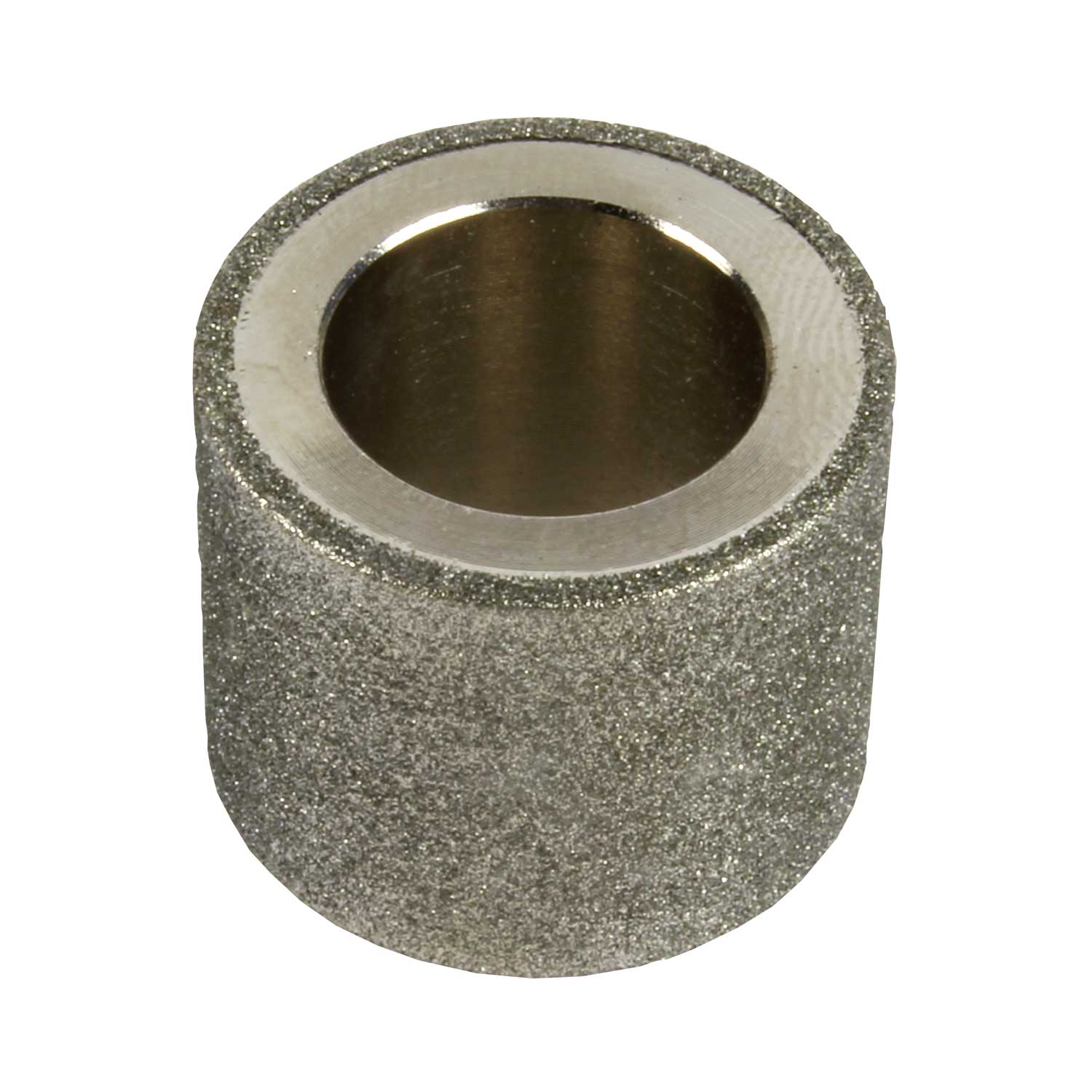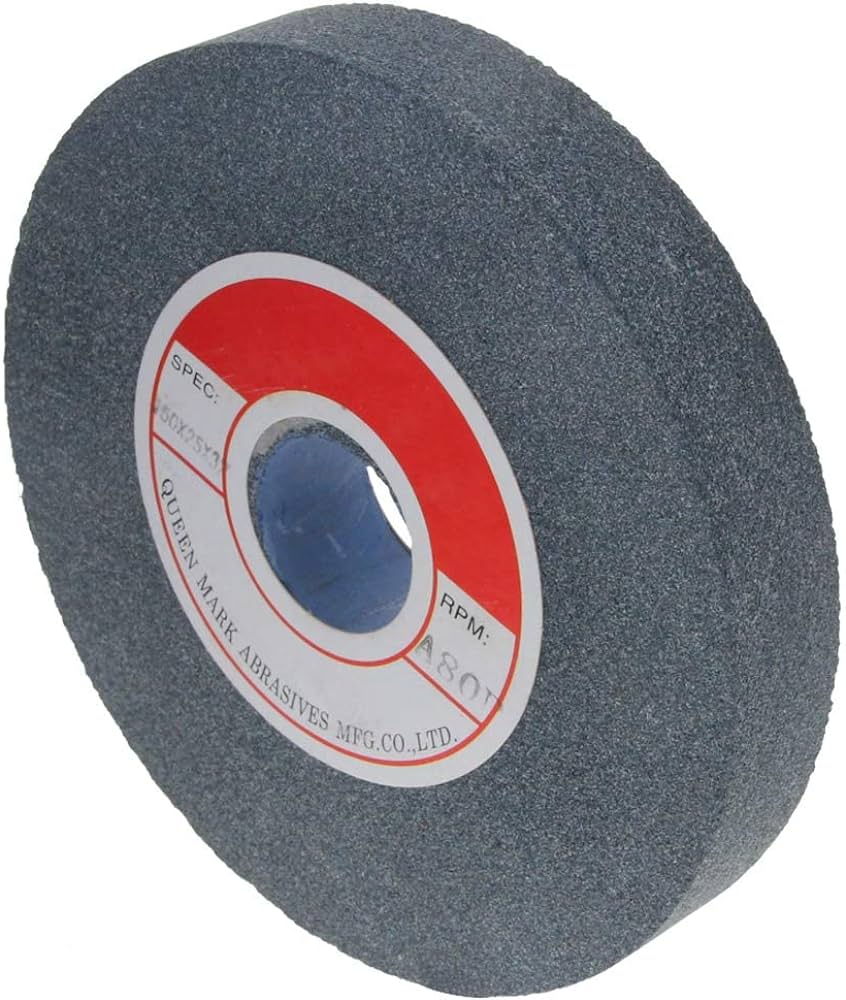Are you wondering what grit grinding wheel to use for sharpening drill bits? Look no further! In this guide, we’ll dive into the world of drill bit sharpening and help you understand which grit grinding wheel is best for the job.
So, why is the grit grinding wheel important? Well, think of it as the superhero in your sharpening arsenal. Different grits offer varying levels of coarseness, allowing you to achieve the perfect edge on your drill bits. But finding the right grit isn’t always straightforward, and that’s where we come in.
Join us as we demystify the grit grinding wheel selection process and equip you with the knowledge to sharpen your drill bits like a pro. Sharpening drill bits can be an art, and with the right grit grinding wheel, you’ll be well on your way to achieving sharp, precise, and long-lasting cutting edges. So, let’s get started!

What Grit Grinding Wheel to Use for Sharpening Drill Bits: A Comprehensive Guide
Drill bits are essential tools for any DIY enthusiast or professional, but they can become dull over time with repeated use. Sharpening drill bits helps maintain their efficiency and prolong their lifespan. One important factor to consider when sharpening drill bits is the grit grinding wheel you use. The grit size determines the level of abrasiveness and helps achieve the desired sharpness. In this article, we will explore the different grit grinding wheels available and guide you on choosing the right one for sharpening drill bits.
Factors to Consider When Choosing a Grit Grinding Wheel
Before delving into the specific grit sizes, it’s crucial to understand the factors at play when choosing a grinding wheel for sharpening drill bits.
Abrasive Material
Grit grinding wheels are made from a variety of abrasive materials, including aluminum oxide, silicon carbide, and diamond. Each material has its own strengths and weaknesses, so it’s important to consider the type of drill bit you’re sharpening and the material it’s made of. For example, aluminum oxide wheels are versatile and commonly used for general sharpening purposes, while silicon carbide wheels are ideal for sharpening carbide-tipped drill bits. Diamond wheels, on the other hand, are incredibly durable and best suited for high precision sharpening tasks.
Grit Size
The grit size of a grinding wheel determines the coarseness or fineness of the abrasive particles. It is represented by a number, such as 80 or 200. Lower numbers indicate a coarser grit, which removes more material and results in a rougher edge. Higher numbers imply a finer grit, which removes less material and creates a smoother, sharper edge. The grit size you choose should depend on the condition of your drill bit and the level of sharpness you wish to achieve.
Wheel Hardness
The hardness of a grinding wheel affects its durability and efficiency. Softer wheels are better-suited for sharpening high-speed steel (HSS) drill bits, while harder wheels are more suitable for sharpening carbide-tipped drill bits. Selecting the appropriate wheel hardness ensures optimal sharpening results and prevents damage to the drill bit.
Wheel Diameter and Width
The diameter and width of the grinding wheel should match the specifications of your grinder. Using a properly sized wheel ensures stability and reduces the risk of accidents or uneven sharpening. It’s crucial to consult your grinder’s manual for the recommended wheel dimensions before making a purchase.
Cost and Availability
The cost and availability of different grit grinding wheels can influence your buying decision. It’s important to compare prices from various suppliers and evaluate the availability of the specific grit size and abrasive material you require. Additionally, consider the reputation and reliability of the supplier to ensure the quality of the grinding wheel.
Health and Safety Precautions
Sharpening drill bits involves working with potentially hazardous tools and materials. Always prioritize safety by wearing protective gear, such as safety glasses and gloves, and ensuring proper ventilation in your workspace. Follow the manufacturer’s instructions for operating the grinder and handling the grinding wheel to minimize the risk of accidents and injuries.
Cleaning and Maintenance
After each use, clean your grinding wheel to remove any debris or metal particles that could impair its performance. Regular maintenance, such as dressing the wheel to regain shape and balance, will help extend its lifespan and ensure consistent results when sharpening drill bits.
Key Takeaways: What Grit Grinding Wheel for Sharpening Drill Bits?
- Choosing the right grit grinding wheel is important for sharpening drill bits.
- A rougher grit wheel, like 80 or 100, is ideal for reshaping drill bits with significant damage.
- A medium grit wheel, around 150 or 180, works well for general sharpening and maintenance.
- A finer grit wheel, such as 220 or 320, is suitable for achieving a polished finish on the drill bits.
- Consider the material of the drill bit when selecting the grit size. Harder materials may require a coarser grit wheel.
Frequently Asked Questions
Are you wondering which grit grinding wheel is suitable for sharpening your drill bits? Look no further! Here are some common questions and answers to help you make the right choice.
Q: How do I choose the right grit grinding wheel for sharpening drill bits?
A: When selecting a grit grinding wheel for sharpening drill bits, you need to consider the material and hardness of the drill bits. For softer materials like wood or plastics, a finer grit wheel between 80 and 120 would be suitable. This ensures a sharper cutting edge without risking damage to the bit. If you are working with harder materials like metal, a coarser grit wheel between 36 and 60 would be more effective in removing material and reshaping the drill bit. Remember, the higher the number, the finer the grit.
It’s important to note that using the correct grit wheel is just one part of the equation. The overall condition of the grinding wheel, its balance, and proper technique also play crucial roles in achieving optimal sharpening results.
Q: Can I use a grinding wheel with a different grit than recommended for drill bit sharpening?
A: While it’s generally recommended to use the appropriate grit grinding wheel for sharpening drill bits, it is possible to use a different grit if needed. Keep in mind that using a grit that is too coarse may remove more material than necessary, potentially shortening the lifespan of the drill bit. On the other hand, using a grit that is too fine may take longer to achieve a sharp edge. It’s always best to follow the manufacturer’s recommendations, but if you don’t have the exact grit available, you can adjust by using a slightly finer or coarser wheel as long as you are mindful of the potential trade-offs.
If you find yourself needing different grits for various drill bits, you might consider having multiple grinding wheels to accommodate the different applications. This way, you can have a dedicated wheel for each grit, ensuring optimal sharpening results for your specific needs.
Q: How often should I replace my grinding wheel for sharpening drill bits?
A: The frequency of grinding wheel replacement for sharpening drill bits depends on several factors, such as the type of material being sharpened, the amount of use, and the condition of the wheel. As a general guideline, it’s recommended to inspect the grinding wheel regularly for any signs of wear, such as cracks or uneven surfaces.
If the wheel is in good condition and can still effectively sharpen drill bits, there is no immediate need for replacement. However, if you notice significant wear or damage that affects its performance, it’s time to replace the wheel. Remember, a worn-out grinding wheel may not provide consistent and precise sharpening results, which can lead to reduced drilling efficiency and potential safety hazards.
Q: Are there any safety precautions I should take when using a grinding wheel to sharpen drill bits?
A: Absolutely! When using a grinding wheel for sharpening drill bits, safety should be your top priority. Make sure to wear appropriate safety gear, such as safety goggles, a face shield, and gloves, to protect yourself from sparks and flying debris.
Additionally, ensure that the grinding wheel is properly installed and securely tightened on the grinder. Follow the manufacturer’s instructions for setup and operation, and never operate the grinder without the safety guards in place. It’s also important to maintain a stable and balanced posture while sharpening drill bits to prevent accidents or injuries.
Q: Can I use a bench grinder for sharpening drill bits with a grinding wheel?
A: Yes, a bench grinder can be used for sharpening drill bits with a grinding wheel, but it’s crucial to exercise caution. Bench grinders are powerful tools that spin the grinding wheel at high speeds, so it’s important to have a firm grip on the drill bit and maintain a steady hand while sharpening.
Always ensure that the grinder is securely clamped to a stable surface and that you have a clear workspace. Take breaks if needed to prevent overheating of the drill bit or the grinding wheel. Keep in mind that consistent and even pressure is key to achieving a sharp and balanced cutting edge on the drill bit, so take your time and proceed with care.

Summary
If you want to sharpen your drill bits, you need to choose the right grit grinding wheel. Sharpening a drill bit is like giving it a new life, and the right wheel can make a big difference. The grit level determines how coarse or fine the wheel is, and you should choose a medium grit wheel for most drill bits. However, if your drill bits are very dull, a coarse grit wheel can help remove more material quickly. On the other hand, if you just need to touch up your bits, a fine grit wheel will do the job. Remember to use safety precautions and follow the manufacturer’s instructions for the best results.
It’s important to take care of your drill bits and keep them sharp for efficient drilling. Always clean them before sharpening to remove any debris or buildup. Use the correct angle and motion when sharpening, and don’t apply too much pressure. Take breaks if you’re working on multiple bits to avoid overheating. With a little practice and the right grit grinding wheel, you can keep your drill bits sharp and ready for any task. So, don’t forget to give your bits some love and keep them in tip-top shape!
